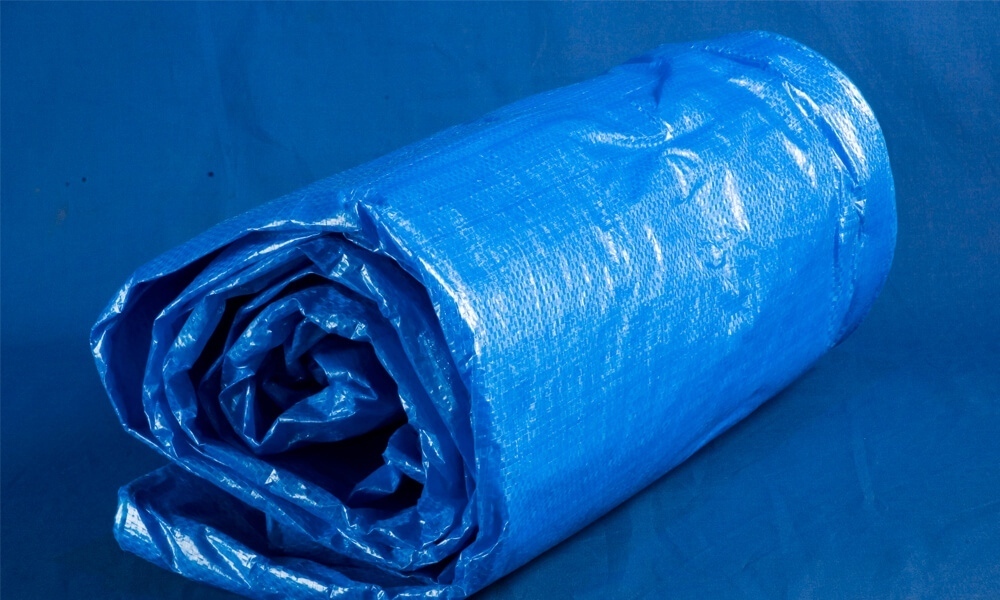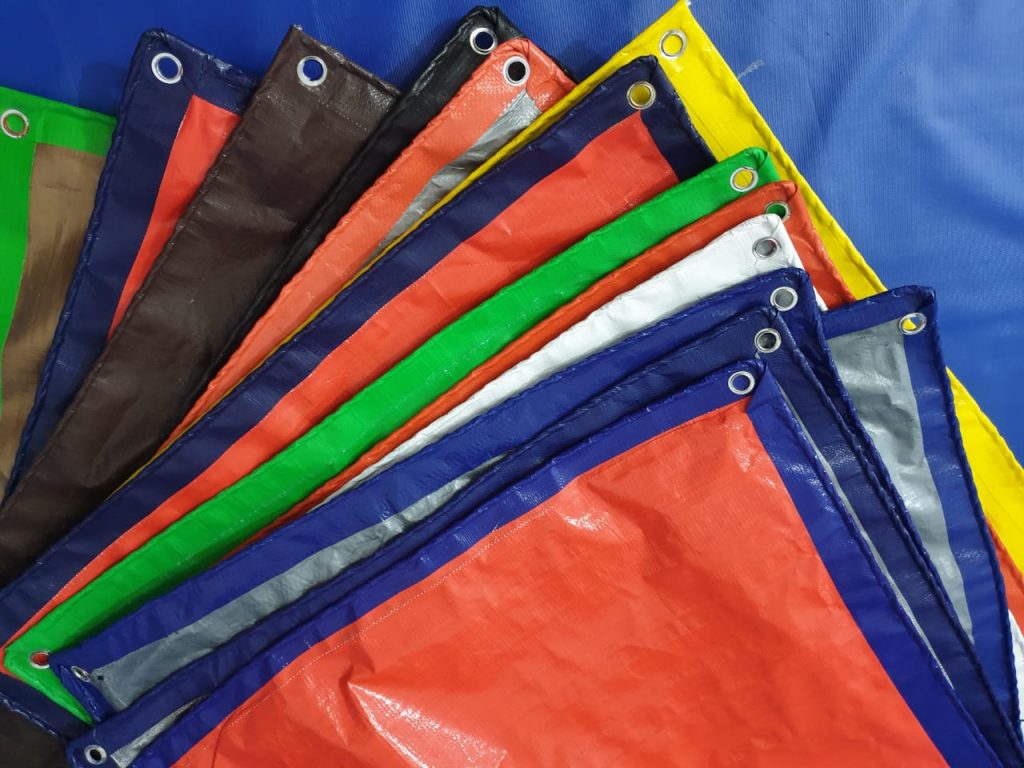A tarp or tarpaulin is a very durable fabric, and it is used worldwide for many applications. However, not every tarp is the same, and there is a variety of them according to the materials used for their production.
If you are interested, you can discover everything about the tarp. For instance, what is a tarp made of? Thus, let’s find out about it, its types, and why it matters!

What Is a Tarp Made Of?
Depending on their use, tarps can most often be made from polyethylene, canvas, vinyl (PVC), or ripstop. Each material has its characteristics, making the tarp applicable for many different purposes. Thanks to the materials they are made of, tarps are very versatile and durable.
People like farmers and truckers frequently use a tarp, and you can also use it to build a forest tent if you’re into bushcraft and camping. Nevertheless, you first need to know what a tarp is made of and how to recognize the right type.
For that reason, I will analyze each tarp material and type, so you will know which one suits an outdoor tent best.
Tarp Materials Explained
Tarps can be made from multiple materials. This section will cover the most frequently used ones in detail.
Polyethylene
Polyethylene is the most commonly produced plastic today. Its primary use is for packaging goods, and the German scientist Hans von Pechmann first discovered it in 1898.
Polyethylene is used in the production of tarps because it is inexpensive and can be manipulated to result in high or low-density tarp material. Tarps made from polyethylene are lightweight and easy to use, making them ideal for all kinds of uses.
They are also durable because polyethylene is resistant to many outdoor and indoor conditions. It is also highly water-resistant, absorbing it in very low percentages.
Vinyl (PVC)
Vinyl or Polyvinyl Chloride (PVC) is another commonly used plastic compound today. PVC has an extremely wide field of application because it can have a hard and a soft form.
Hard PVC is mostly used in pipe manufacturing, plastic packaging, and plastic bottles. On the other hand, soft PVC is used for cable insulation and imitation leather and can even replace rubber.
PVC is also used for tarp production, adding more rigidity and durability. The tarps made from PVC have a smooth surface, are thicker and often used for heavy-duty tasks. Truckers use them when transporting goods, as they are highly resistant to weather conditions and UV light.
Canvas
A plain-woven fabric canvas has been around for thousands of years. People in the past have manufactured it from cotton, linen, or even hemp. Canvas is very sturdy and durable, especially if it is thick, which is why it is also used in the production of tarps.
When producing tarps with canvas, synthetic material is added, blending the canvas and synthetic fibers to make the material more water resistant.
Unfortunately, canvas tarps are not 100% waterproof, so they wouldn’t be ideal for a rainy day in the forest. However, for a pleasant and sunny day, making a tent with a canvas tarp will provide more breathability and air circulation because of the natural materials.
Ripstop (nylon)
The ripstop fabric, as the name suggests, is a fabric made to be tear resistant. Tarps are often manufactured from nylon, using a reinforcing weaving pattern that makes them incredibly strong and resistant to tearing forces. This fabric is also made using cotton, silk, polyester, and polypropylene, but its resistance to tearing is greatly attributed to the nylon compound.
Ripstop tarps have a waterproof finish and are very suitable for outdoor use. Making a tent from this material tarp will be an excellent choice, as it will also be breathable and convenient to use and manipulate.
Read More: How to Build a Waterproof Shelter in the Woods
Different Uses of Tarps According to the Material
Now let’s talk about the different uses of tarps, according to the material from which they are made.
Polyethylene tarps
Used for covering roofs, floors, or entire structures. Truckers and truck companies use them to cover the bed of a truck trailer because they are wear resistant.
Vinyl tarps
They are used as truck bed covers and curtains because they are resistant to weather conditions, UV light, and fire. As they are waterproof, you can also use them in outdoor activities, such as building a forest tent.
Canvas tarps
Due to their versatility, canvas tarps are widely used in construction, transportation, and storage. Their high-temperature resistance makes them ideal for outdoor use, especially for covering something and protecting it from UV rays.
Unfortunately, canvas tarps are not ideal for rainy weather because they are only water resistant and not waterproof.
Ripstop tarps
Highly breathable and resistant to tearing, Ripstop tarps are great flatbed or ute covers on the back of vans. Because of their strength, they are also widely used in construction and are very suitable for outdoor camping.
Mesh tarps
I only mention mesh tarps here, as they are made as a mix of all the materials I mentioned above. What’s important about them is that they are strong and durable, UV resistant, and mostly used for covering sand or gravel when transpired with trucks. They are also great for UV protection and are often used as pool covers.
Read more: How to Put up a Tarp Without Trees

Tarp Colors – Meaning and Classification
Now that you know what is a tarp made of and used for according to its materials, let me briefly mention something about tarp colors.
Tarps come in several different colors. Each color has a meaning by which the tarp can be classified. Here is a short list of some of the tarp colors and their meaning:
- Blue, green, and brown – these colors are frequently used to manufacture general-purpose tarps
- Red, orange, and yellow – these tarp colors are mainly used to display something hazardous in construction
- Black – most commonly used for asphalt transportation, as this color absorbs UV light and is ideal for outdoor applications
- White and silver – ideal tarp color for tents because of its properties to reflect sunlight and provide shade
